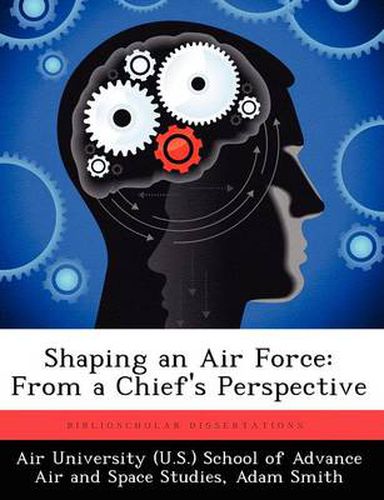Readings Newsletter
Become a Readings Member to make your shopping experience even easier.
Sign in or sign up for free!
You’re not far away from qualifying for FREE standard shipping within Australia
You’ve qualified for FREE standard shipping within Australia
The cart is loading…






This title is printed to order. This book may have been self-published. If so, we cannot guarantee the quality of the content. In the main most books will have gone through the editing process however some may not. We therefore suggest that you be aware of this before ordering this book. If in doubt check either the author or publisher’s details as we are unable to accept any returns unless they are faulty. Please contact us if you have any questions.
The USAF has reached a turning point. The wars in Afghanistan and Iraq are ending, and prognosticators claim the occurrence of an MCO is unlikely. CTNA operations and Air/Sea Battle have emerged as the most likely roles for the USAF in the near future. However, what do the USAF’s former leaders say about that? The following interviews with past CSAFs will not only cover the optimal balance of the force but will highlight their thoughts on the current force. Topics will cover officer force development, what type of officer can be CSAF, whether space or cyber should be separate services, and their reflections on both the past and the future of the USAF. This represents a unique opportunity to capture the perspectives of a very select group of individuals. This study aims to develop and analyze the thoughts of eighteen years of CSAF experience during some of the most dramatic and turbulent periods of the USAF’s existence. The author developed questions to support a qualitative research interview process. The research seeks to uncover a retrospective point of view of the subjects informed by their experiences. The structure and purpose of the interviews surround the duties of the CSAF and the expected future of the United States Air Force. Furthermore, the author analyzed the interviews to interpret each CSAFs point of view and synthesize those views for trend analysis and knowledge formulation. Insight gained from this examination may aid officers in forming plans for the future growth and development of the USAF. As a minimum, it will provide a point of departure for strategic decisions concerning the future of the USAF.
$9.00 standard shipping within Australia
FREE standard shipping within Australia for orders over $100.00
Express & International shipping calculated at checkout
This title is printed to order. This book may have been self-published. If so, we cannot guarantee the quality of the content. In the main most books will have gone through the editing process however some may not. We therefore suggest that you be aware of this before ordering this book. If in doubt check either the author or publisher’s details as we are unable to accept any returns unless they are faulty. Please contact us if you have any questions.
The USAF has reached a turning point. The wars in Afghanistan and Iraq are ending, and prognosticators claim the occurrence of an MCO is unlikely. CTNA operations and Air/Sea Battle have emerged as the most likely roles for the USAF in the near future. However, what do the USAF’s former leaders say about that? The following interviews with past CSAFs will not only cover the optimal balance of the force but will highlight their thoughts on the current force. Topics will cover officer force development, what type of officer can be CSAF, whether space or cyber should be separate services, and their reflections on both the past and the future of the USAF. This represents a unique opportunity to capture the perspectives of a very select group of individuals. This study aims to develop and analyze the thoughts of eighteen years of CSAF experience during some of the most dramatic and turbulent periods of the USAF’s existence. The author developed questions to support a qualitative research interview process. The research seeks to uncover a retrospective point of view of the subjects informed by their experiences. The structure and purpose of the interviews surround the duties of the CSAF and the expected future of the United States Air Force. Furthermore, the author analyzed the interviews to interpret each CSAFs point of view and synthesize those views for trend analysis and knowledge formulation. Insight gained from this examination may aid officers in forming plans for the future growth and development of the USAF. As a minimum, it will provide a point of departure for strategic decisions concerning the future of the USAF.